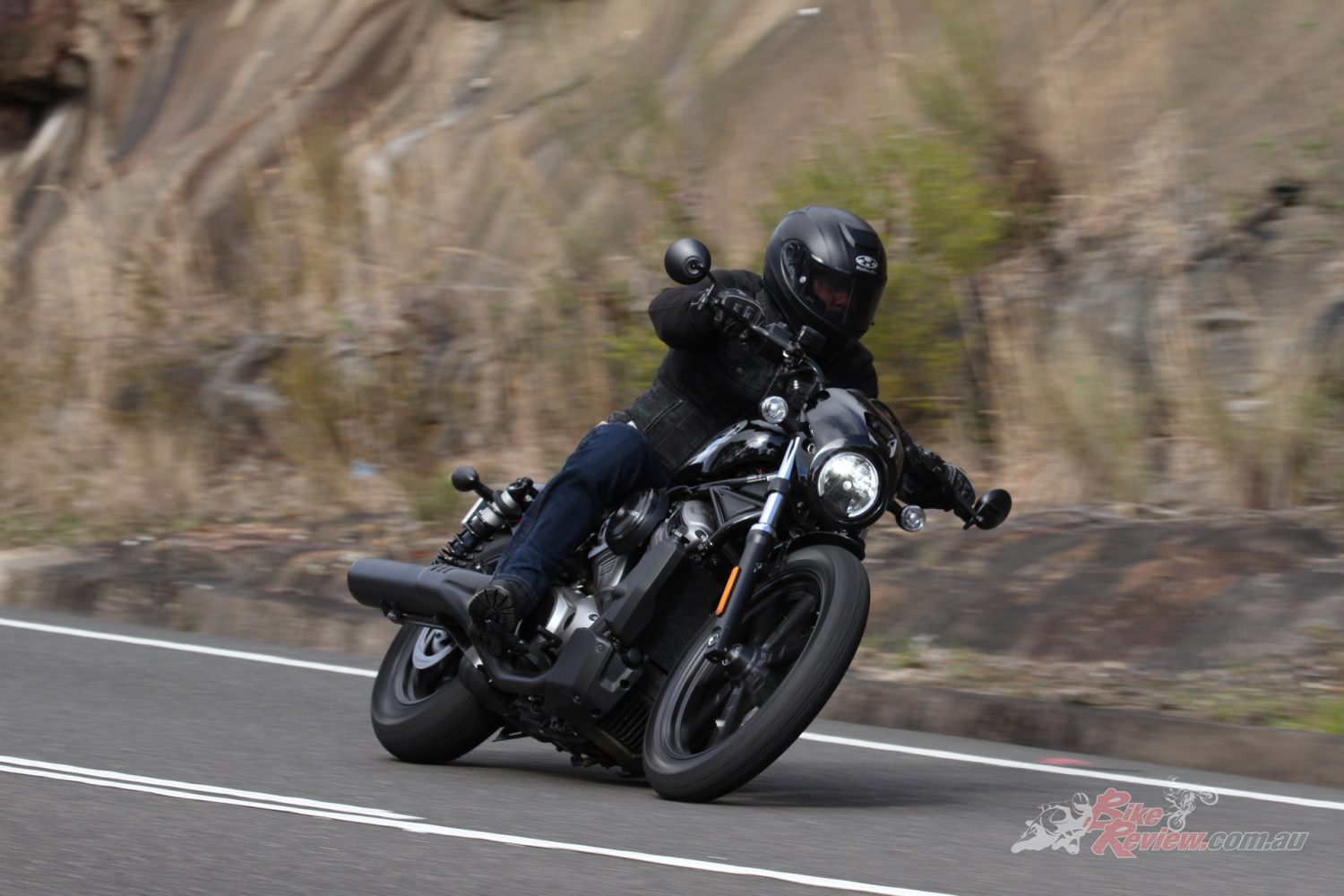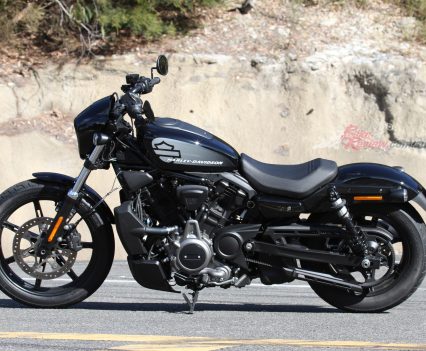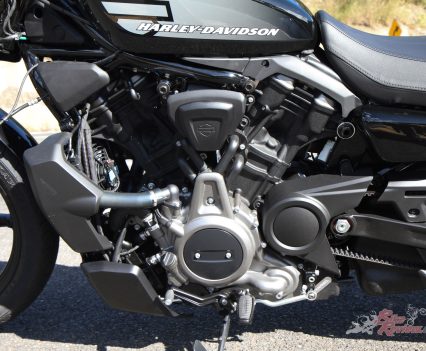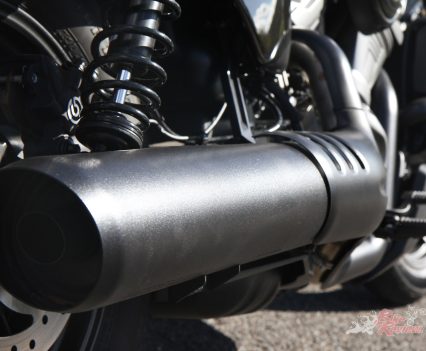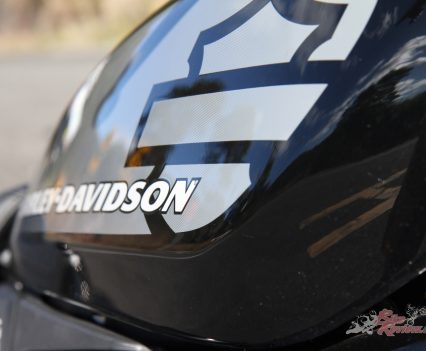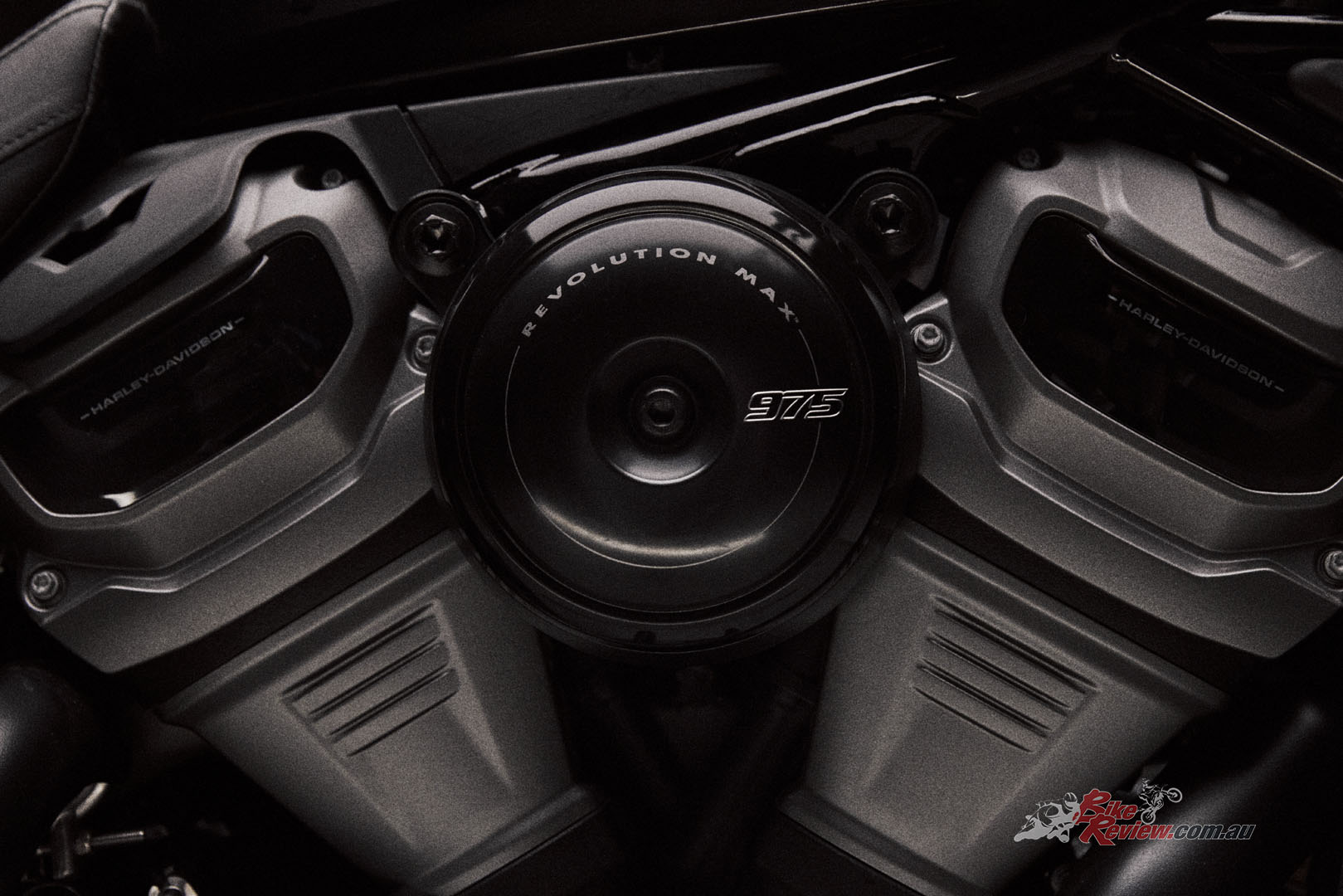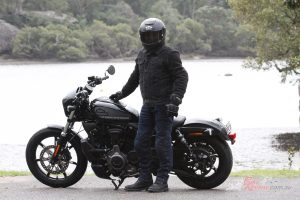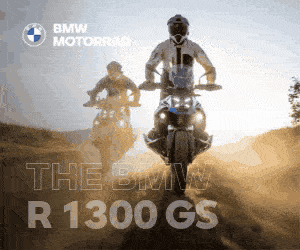Simon has been out testing the new, entry-level machine in the Sportster range. Check out what he thought of the all-new Nightster... Words: Simon Harris, Photos: Heather Ware.
I have had the good fortune to have now ridden four different Harley’s. Not many, but perhaps an eclectic little mix. Each have been quite different to each other, from one extreme to another. Now I have a new contender for my favourite Harley, the 2022 Nightster!

Simon has experienced both ends of the Harley-Davidson spectrum. Check out what he thought of the his latest H-D encounter on the 2022 Nightster!
What four? The first was the entry-level 500 Sporty, which disappointed me to be honest. Next is the LiveWire, which is an extraordinary motorcycle and something you might never have dreamed that H-D would do. But they did the unfathomable and came up with a fantastical beast with an electric heart.
Check out Simon’s LiveWire review here…
I then managed to swing a leg over a Low Rider S with its behemoth 117ci pseudo new-old school Milwaukee-Eight twin busting out 168Nm of stomping oomph at nary above a four-cylinder sportsbike idle. Ferocious and darn mean. Cutting to the chase, the new Nightster is a totally different animal to the three just mentioned.
To be deadpan honest, until I experienced the LiveWire, I was not too particularly dope about H-D’s. I had kind of become resigned to the idea of the engineering being a little stale and languid. This ignorant resolve was eviscerated, pushed further by this latest revelation in the form of the Nightster. Well and truly changed feelings.

Simon admitted he was never a Harley person. However, the Nightster and LiveWire quickly changed his mind…
The Nightster is the latest chapter in the life story of the Sportster model, which was forged into production 65 years ago. A lineage like that needs a suitable successor that simply must maintain certain traditions and family DNA. Harley-Davidson have not been looking purely at changes in their long established aesthetic, but a significant advancement in the underlying technology to continue propelling the series well into the future. The basis of this evolution has to be the Revolution Max 975T engine, which employs many leading technologies to maximise power and efficiency.
Like all H-D cruiser models, the wheelbase is lengthy, with a centre of gravity that is seemingly quite forward and slightly below the axles. This makes for high degrees of stability and, when accompanied by wide handlebars, easy changes of direction. The centre of gravity is lower again courtesy of the fact that, even with the friendly seat height, you are actually perched directly above the fuel tank. A kerb weight of 221kg may sound hefty, but the package is easily manoeuvred thanks to the friendly stature.

“A kerb weight of 221kg may sound hefty, but the package is easily manoeuvred thanks to the friendly stature.”
A switch of keyless fob operated switchgear into run mode and a dab on the starter button gets the 975cc four-valve per-cylinder, liquid-cooled 60° twin into rotation. The whole plot has been tuned for as broad a range of usable torque as can be mustered, and includes tuned length intake velocity stacks and airbox volume in cahoots with variable valve timing on the intake valves. A far cry from the original Sportster motor.
Further refinements include softly spoken hydraulic tappets, balance shafts to curtail vibration while still maintaining a nice V-twin pulse. All of the measures taken are purpose driven and result in a winning combination of greater mechanical longevity, excellent performance and reduced servicing.
Before leaving, Dan from H-D HQ says that this thing is “cold-blooded” and needs some warm-up time. I think that’s nice, and smile. Having the years on me and reluctant, aching joints to fully understand mechanical sympathy, I always let her warm for a few minutes before venturing forth. Given. The sound at idle coming from the long shotgun style can is a bit puffy and maybe a little uncharacteristically PC, but this is low speed without any load – okay, I get it… I get my gear sorted as it’s about to go La Nina yet again and head home.
Once the bike is warmed up, I start to widen the throttle to blip through the traffic – such an easy bike to ride, despite the slightly alien ergonomics. It really feels good. A fair bit more ergonomically compliant for me than the Low Rider S I had just hopped off. Trad H-D foot controls are a thing for me, and I find it very odd to put feet ahead of torso, but the Nightster is more straight up and down and this is pretty okay for keeping sway in the saddle on acceleration and change of direction.

“Once the bike is warmed up, I start to widen the throttle to blip through the traffic – such an easy bike to ride, despite the slightly alien ergonomics. It really feels good.”
Surprisingly comfy and wieldy, too. You have a fairly long wheelbase with a low slung engine, but it’s easy to manoeuvre. I must say that as little more than a Harley virgin, it was starting to feel surprisingly familiar (if you can use such a term) with the dynamics on offer.
Stampeding through motorway traffic presented little problem, given width for the ‘bars and ‘bar-end mirrors, although I found that very low speed control was a little outside my grasp in keeping engine, rear brake and steering in cahoots. Not to worry as the occasional bicycle lane opened up quick shortcuts to the head of the traffic.
Engine response is absolutely on par with the kind of power delivery that I personally dig. Once you start to use the actual thrust on hand and feel-hear the compression in operation, you know that this is no slow, laid-back motor. The fact is the engine, which is fully in-house designed and executed, has a wonderful appetite for traversing the rev range. It is crisp and superbly responsive and has a really gnarly exhaust note that seems to exhibit the tension and release of that built up compression.
“Engine response is absolutely on par with the kind of power delivery that I personally dig. Once you start to use the actual thrust on hand, you know that this is no slow, laid-back motor.”
It really is a lovely engine with a great compromise between torque availability and peak power that equates to an easy to explore and very invigorating bike to ride. It really hammers, actually. Sorry, but the LCD tacho is not what is needed here – swap the big speedo out, please.
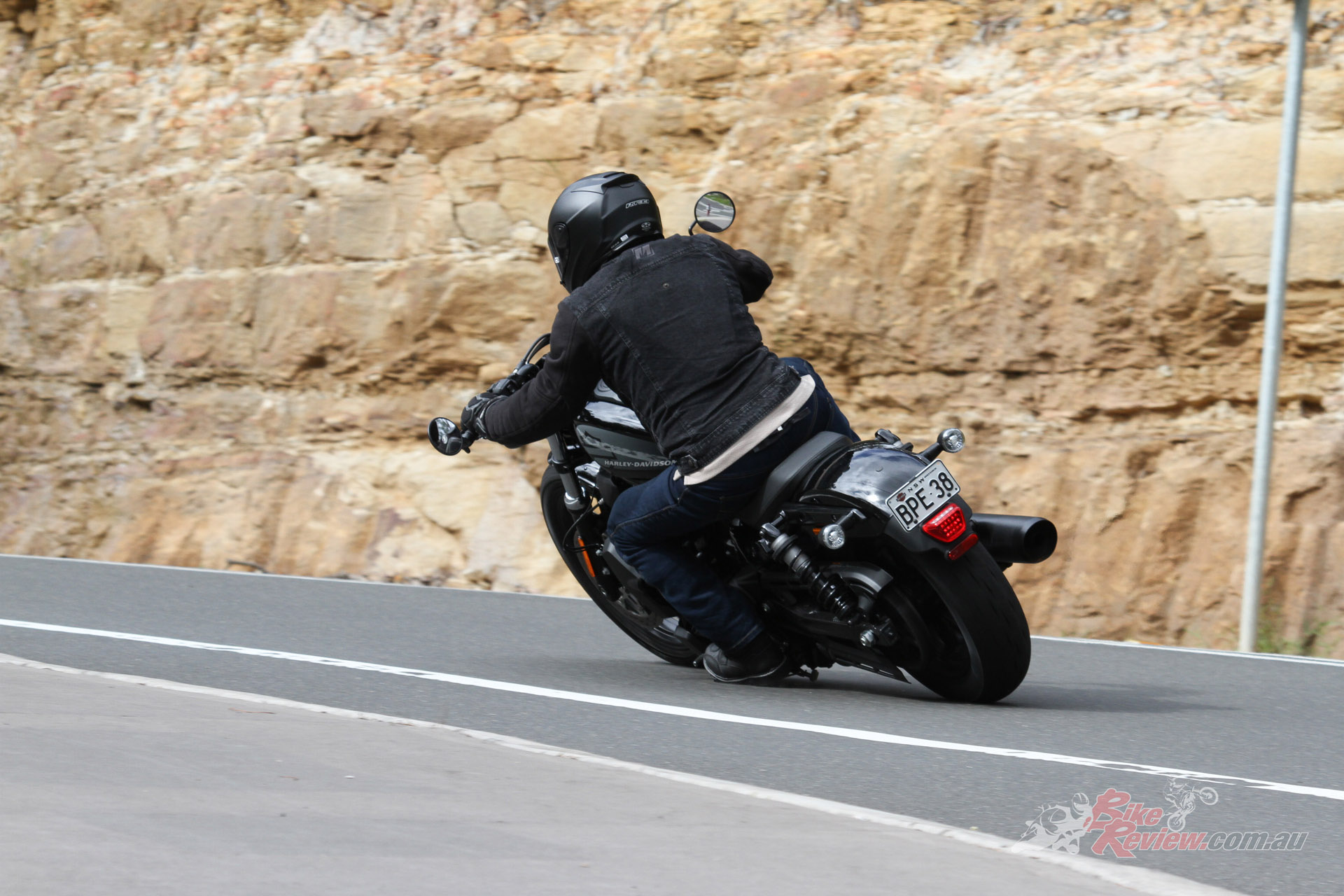
“It really is a lovely engine with a great compromise between torque availability and peak power that equates to an easy to explore and very invigorating bike to ride.”
I did find that the gearshift was a bit tight, making for some slightly erratic operation and perhaps more clutching than normal. New machine glitches I reckon, meaning the ensuing redness and tenderness of my left-foot big toe after a decent ride was not actually gout, thank God.
My first proper ride was not exactly pleasant due to wet conditions and appalling road repairs after our recent and extended wet weather. A patchwork of adulterated bitumen and abrupt level changes made the plot not unstable (it was extremely well mannered) but I was just sore despite the suspension doing its damndest to cope. Perhaps a little less preload on the twin rear shocks would have helped. Other than this, whenever the road smoothened up, the Nightster was right there with you and eager to hustle on. I used the opportunity to play with the three running modes, which are each linked to how intrusive the traction control system is.
Rain mode seems to curtail output hugely and to the point you think you have a problem. Street mode provides the full monty power but has a noticeably muted initial throttle response that feels like a slack cable and can be a bit intrusive to smooth riding. The remaining Sport mode left the engine unabridged and really cracking on.
On one or two familiar corners in the damp it was possible to get the rear to spin and step out a bit, however, in such a way as to not call for immediate Hail Mary’s. This eventuated, in the right conditions, to exploring the free-revving nature of the engine and its want to deliver. It is a fast engine.
To put into perspective, the high-profile 150-section rear Dunlop was good in dry and pretty predictable in dampish conditions, but was highly prone to spinning up in fully wet conditions – the engine torque easily overwhelming available grip and making riding rather interesting. Happy to drop into Rain mode.

“The high-profile 150-section rear Dunlop was good in dry and pretty predictable in dampish conditions, but was highly prone to spinning up in fully wet conditions.”
Harley-Davidson claims approximately 32° lean angle, but this is simply not enough. The reason being that the bike is so nimble and capable of cornering. The ‘pegs are too low and too narrow, with your boot soles out in the breeze. When you have a bike that is this chuckable and still stable and balanced, I believe in giving it the freedom to corner. Unexpected boot contact with the road almost twisted my left knee backwards and also nigh took my right foot off at the ankle. It was difficult not to remain acutely aware of ground clearance after these incidents. This is a shame really, because the whole bike feels eager to crank over but is hindered by this lack of clearance.
The big single disc Brembo setup out front was wholly adequate and proved to supply sufficient feel to very easily reach the point where the ABS started kicking in. The raked out front-end not only negates dive, but remains extremely stable when you are being heavy. During the photoshoot I was really using the brakes – you can literally hear the rubber reaching the point of traction loss.
“When you have a bike that is this chuckable and still stable and balanced, I believe in giving it the freedom to corner”…
Repeated doses of very heavy braking got to the point where the lever was rock hard and lifeless, but I doubt that this would be an occurrence during typical riding. I found operating the rear brake not to my liking due to the geometry that seemed to prevent me from applying adequate pressure without additional effort.

“The big single disc Brembo setup out front was wholly adequate and proved to supply sufficient feel to very easily reach the point where the ABS started kicking in.”
It’s a nice looking bike with a suitably menacing profile. The finishes are nice, with many cues dedicated to its heritage, like the round airfilter cover betwixt the cylinders and the trad fenders. The stylists and engineers have done a good job of keeping the water-cooling pretty much a secret and have really excelled at rejuvenating the Sportster in a way that will appeal to both experienced brand users and newcomers.
“The overall balance and poise of the chassis is well matched to other components and that lovely engine, making for a fantastic bike but also a great platform for customisation.”
The overall balance and poise of the chassis is well matched to other components and that lovely engine, making for a fantastic bike but also a great platform for customisation. The addition of an array of electronic rider aids is also a boon for rider safety and pleasure. If you go looking, there are already many great custom Nightsters that will inspire. Ride on, ride long, ride cool. Ride the Nightster.
Tech Talk, Harley-Davidson Nightster
At the heart of the 2022 Nightster model is the new Revolution Max 975T powertrain. It is a liquid-cooled, 60-degree V-Twin with a torque curve that stays flat through the broad powerband – and engine performance designed to deliver strong acceleration and robust power through the mid-range.
The length and shape of the intake velocity stacks, combined with the airbox volume, are tuned to maximise performance across the engine speed range. The profiles of DOHC and Variable Valve Timing phasing on the intake valves are designed to match the performance of this engine. Hydraulic valve lash adjustment ensures quiet operation and eliminates the need for costly, complicated service procedures. Internal balancers help reduce engine vibration to enhance rider comfort and improve vehicle durability.
H-D say the Nightster model pairs a nimble, lightweight chassis with a powerful engine tuned for strong mid-range performance. Mid foot controls and a low-rise handlebar put the rider in a centred, comfortable posture on the bike. Unladen seat height is 705mm. The low seat height combined with a narrow profile makes it possible for most riders to confidently place feet down flat at a stop.

H-D say the Nightster model pairs a nimble, lightweight chassis with a powerful engine tuned for a strong mid-range.
The Revolution Max 975T powertrain is the central, structural component of the Nightster’s chassis, which significantly reduces motorcycle weight and results in a very stiff chassis. The tail section structure is lightweight aluminium. The swingarm is formed of welded rectangular steel tubing and is an attachment point for the dual rear shock absorbers.
Front suspension is 41mm SHOWA Dual Bending Valve conventional forks designed to provide improved handling performance by keeping the tyre in contact with the road surface. The rear suspension features dual outboard emulsion-technology shock absorbers with coil springs and a threaded collar for pre-load adjustment.
The Nightster is equipped with Rider Safety Enhancements by Harley-Davidson The systems are electronic and utilise the latest chassis control, electronic brake control and powertrain technology. Its three elements are:
- Antilock Braking System (ABS): The ABS operates independently on front and rear brakes to keep the wheels rolling and prevent uncontrolled wheel lock.
- Traction Control System (TCS): The rider can deactivate TCS in any Ride Mode when the motorcycle is stopped and the engine is running.
- Drag-Torque Slip Control System (DSCS): Designed to adjust engine torque delivery and reduce excessive rear-wheel slip under powertrain-induced deceleration, which typically occurs when the rider makes an abrupt down-shift gear change or quickly reduces the throttle while on wet or slippery road surfaces.
The Nightster model offers selectable Ride Modes that electronically control the performance characteristics of the bike, and the level of technology intervention. Each Ride Mode consists of a specific combination of power delivery, engine braking, ABS and TCS settings. The rider may use the MODE button on the right-hand controller to change the active ride mode while riding or when stopped, with some exceptions.

Selectable riding modes are one of the highlights for the new model, aimed at making the ride safer…
- Road Mode: Intended for daily use and delivers balanced performance. This mode offers less-aggressive throttle response and less mid-range engine power than Sport Mode, with a higher level of ABS and TCS intervention.
- Sport Mode: Delivers the full performance potential of the motorcycle in a direct and precise manner, with full power and the quickest throttle response. TCS is set to its lowest level of intervention, and engine braking is increased.
- Rain Mode: Designed to give the rider greater confidence when riding in the rain or when traction is otherwise limited. Throttle response and power output are programmed to significantly restrain the rate of acceleration, engine braking is limited, and the highest levels of ABS and TCS intervention are selected.
The 11.7 litre lightweight plastic fuel cell is located below the seat – what appears to be a traditional fuel tank forward of the seat is a steel cover for the airbox. The fuel fill is reached by lifting the hinged locking seat. Locating the fuel cell below the seat optimises the capacity of the engine intake airbox and moves the weight of fuel lower in the chassis compared to a traditional fuel tank location, which results in a lower centre of gravity for improved handling and easier lift off the side stand.

Locating the fuel cell below the seat optimises the capacity of the engine intake airbox and moves the weight of fuel lower in the chassis compared to a traditional fuel tank location.
The Nightster features a round 4.0-inch-diameter analogue speedometer with an inset multi-function LCD display mounted on the handlebar riser. H-D say all-LED lighting is designed to deliver style and outstanding performance while also making the motorcycle conspicuous to other motorists. The Daymaker LED headlamp has been designed to eliminate distracting hot spots.
2022 Harley-Davidson Nightster Specifications
Price: From $23,995 Ride-Away
Warranty: two-years unlimited km
Colours: Vivid Black, Gunship Grey, and Redline Red
Claimed Power: 67kW
Claimed Torque: 95Nm@5000rpm
Wet Weight: 221kg
Fuel capacity: 11.7L
Consumption: 5.1l/100km (claimed)
Engine: Revolution Max 975T, 975cc, 97 x 66mm bore x stroke, 12.0:1 compression ratio, ESPFI, 2-into-1 exhaust; catalyst in header.
Gearbox: Six-speed, primary drive: 48/89 ratio.
Chassis: Trellis frame, lightweight aluminium rear section. Engine used as a stressed member.
Rake: 30° Trail: 137mm
Suspension: 41mm SHOWA Dual Bending Valve conventional forks. Aluminium triple-clamps, (f) Dual outboard, direct-acting (no linkage) emulsion technology shock absorbers with coil springs and a threaded collar for pre-load adjustment, (r)
Brakes: Single front rotor with Brembo four-piston caliper, single rear rotor and single-piston caliper, ABS
Wheels & Tyres: Aluminium cast in Satin Black. Dunlop Harley-Davidson Series Bias Blackwall tyres, 100/90-19 57H (f) 150/80B16 77H (r)
Dimensions:
Wheelbase: 1545mm
Seat height: 705mm
Ground clearance: 110mm
Overall Length: 2250mm
Instruments & Electronics: 4-inch viewable round gauge area analogue display, ABS, Ride Modes, Traction Control
The Verdict | Review: 2022 Harley-Davidson Nightster

